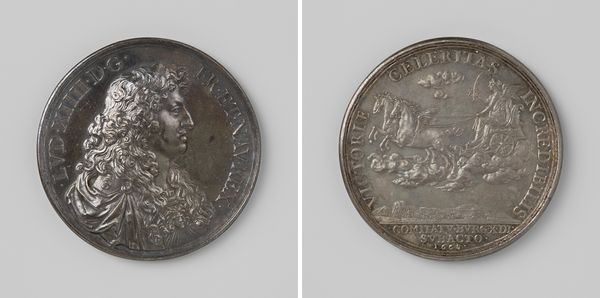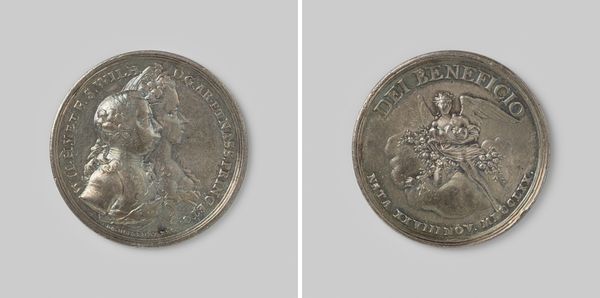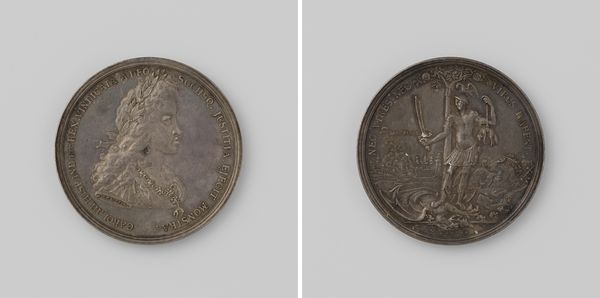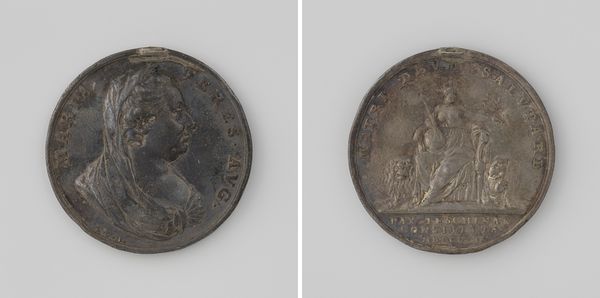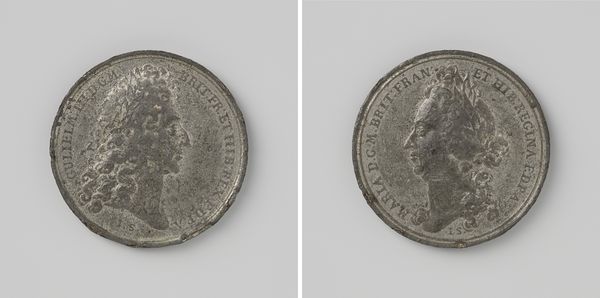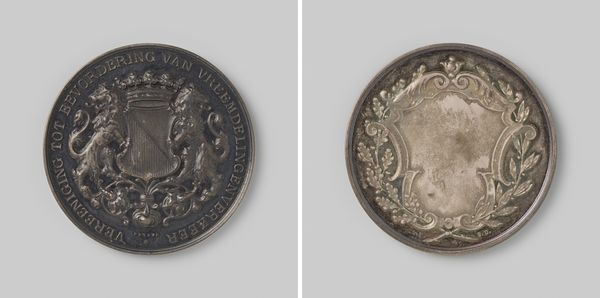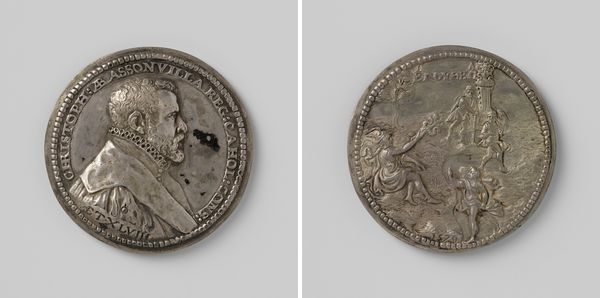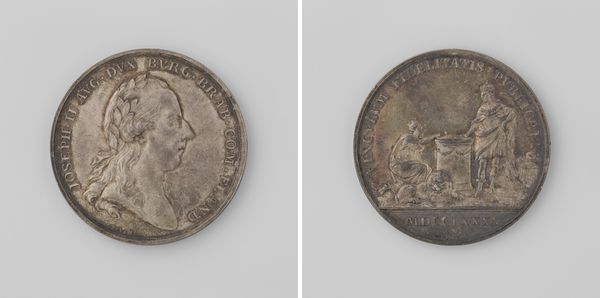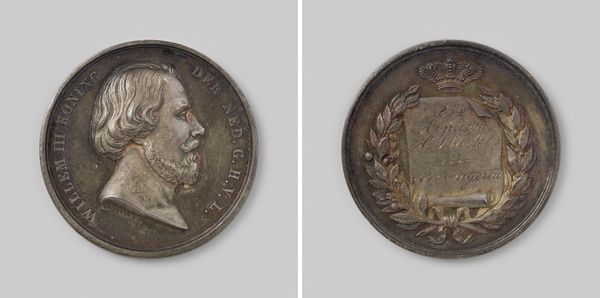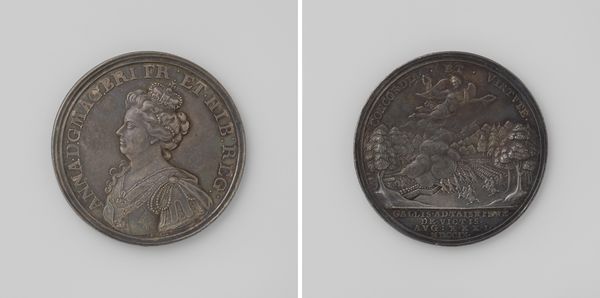
Dimensions: diameter 4.4 cm, weight 29.27 gr
Copyright: Rijks Museum: Open Domain
Curator: At first glance, this medal crafted in 1768 by Franz Andreas Schega has a cold formality, wouldn’t you say? A silvery, metallic starkness... Editor: Indeed. Before we discuss the material properties further, note that this is a commemorative piece honoring Maximiliaan Emanuel, the Count of Torring-Ittenbach. Considering his title, the starkness you perceive perhaps reflects the rigidity of societal structures at the time, doesn’t it? Curator: Possibly. The creation of medals such as this in the baroque period required tremendous skill on the part of the artisan. Metalworking itself held enormous symbolic value given its association with wealth and power structures. The repetitive labor needed for the delicate relief carving surely dictated the tempo of Schega's work life. Editor: Right. I think what’s key here is the question of power—both in terms of depicting a powerful figure and in the way the medium and modes of production can represent social stratification. Look closely; it’s more than just a portrait; it’s an assertion of inherited status and legitimacy. The elaborate coat of arms on the reverse, with the crown prominently displayed, really underlines that. Curator: It also highlights how artistry and artisanship were harnessed to serve those with power. We can admire the aesthetic accomplishment of the piece while acknowledging the broader social context in which the artist toiled to achieve it. Editor: And furthermore, think about what the piece omits. Who isn’t represented? Where are the common laborers who make this opulence possible? The medal tells us a lot, but what it silently excludes tells us even more about hierarchies. Curator: Precisely, power isn’t just about display. It's about control and manipulation of the processes of image making. It's remarkable to observe such layered meanings in a relatively small metal work. Editor: This little object becomes a looking glass into broader, complex systems, doesn't it? Examining art like this becomes not only an act of aesthetic contemplation, but one of conscientious critique.
Comments
No comments
Be the first to comment and join the conversation on the ultimate creative platform.

